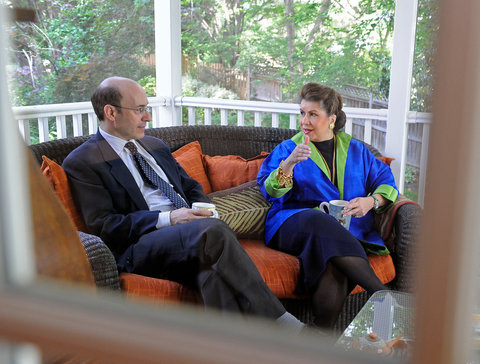Numerous organizations, including The Associated Press, The Boston Globe and several local Boston television stations, erroneously reported Wednesday afternoon that an arrest had been made, or that a suspect was in custody, citing unnamed law enforcement sources. Two of the reports came from CNN and the Fox News Channel, both the subject of widespread criticism last June after misreporting the result of the Supreme Court ruling on President Obama’s health care overhaul law.
CNN and Fox News spent about an hour discussing the news of an arrest with various correspondents and experts before backing off when they received further information.
NBC News held back on reporting news of an arrest during continuing coverage on its MSNBC cable channel. It reported that no arrest had been made and that no person had been firmly identified as under suspicion. (The New York Times did not report that there was a suspect or an arrest.)
The F.B.I. issued a statement later in the afternoon: “Over the past day and a half, there have been a number of press reports based on information from unofficial sources that has been inaccurate. Since these stories often have unintended consequences, we ask the media, particularly at this early stage of the investigation, to exercise caution and attempt to verify information through appropriate official channels before reporting.”
CNN broke news of an arrest at 1:45 p.m., with the correspondent John King citing law enforcement sources. About a half-hour earlier, Mr. King had reported a “breakthrough in the identification of a suspect” and included details of a physical description.
“I was told by one of these sources, who is a law enforcement official, that this was a dark-skinned male,” he said.
By about 2:45, one of CNN’s law enforcement experts, Tom Fuentes, a former assistant director of the F.B.I., appeared on the air and reported that he had three sources who assured him no arrest had been made. The network issued a statement later in the afternoon that cited the three sources who had given CNN the information it used to break the news of the arrest: “CNN had three credible sources on both local and federal levels. Based on this information we reported our findings.”
On Fox News, the anchor Megyn Kelly explained the revised reporting on the arrest, saying that the usual journalistic process calls for reporters to rely on trusted sources to confirm information. “It appears in this case some confirmations were issued when perhaps they should not have been,” Ms. Kelly said.
Paul Colford, a spokesman for The Associated Press, denied The A.P. had said a suspect was arrested but only that one was “in custody.” But the news service had also reported earlier that a suspect was “about to be arrested.” Both reports turned out to be wrong. As of late Wednesday, The A.P. had not acknowledged that it had misreported the information.
Judy Muller, a former network news correspondent who teaches journalism at the University of Southern California, wrote in an e-mail, “I fear we have permanently entered the Age of the Retraction. All the lessons of the past — from Richard Jewell to NPR’s announcement of the death of Gabby Giffords to CNN’s erroneous report on the Supreme Court Ruling on ObamaCare — fail to inform the present. The rush to be first has so thoroughly swallowed up the principle of being right and first that it seems a little egg on the face is now deemed worth the risk.”
Article source: http://www.nytimes.com/2013/04/18/business/media/fbi-criticizes-false-reports-of-a-bombing-arrest.html?partner=rss&emc=rss





